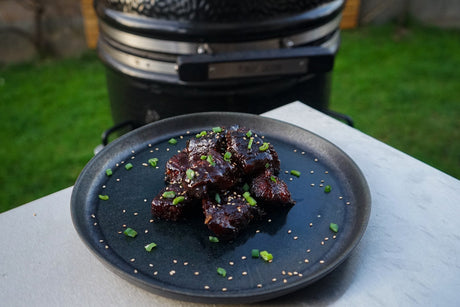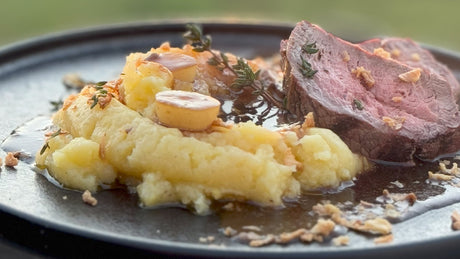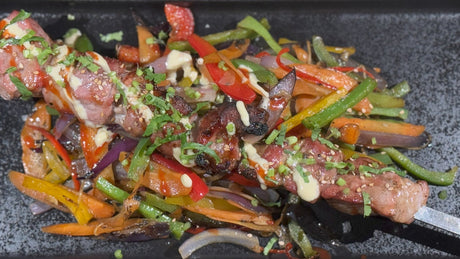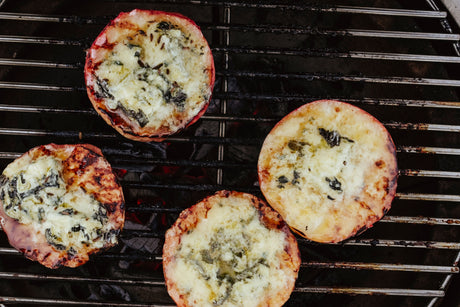
Pork Belly Burnt Ends - Smoked pork belly pralines
Pork belly burnt ends are an all-time BBQ classic! They always go well with a wonderful BBQ evening and are extremely popular! Conjure up these delicious little pork bellies with...
MONOLITH GRILL |

Pork belly burnt ends are an all-time BBQ classic! They always go well with a wonderful BBQ evening and are extremely popular! Conjure up these delicious little pork bellies with...
MONOLITH GRILL |

A juicy roast beef, slow-cooked, in an enchanting sauce - served with a fine potato puree. Rounded off with roasted onions as a topping. Simple, but incredibly good!
MONOLITH GRILL |

A dish from the wok and juicy meat from the spit - it can only be good!And wok cooking is simply fun. The MONOLITH grill is also perfect for this,...
MONOLITH GRILL |

Sometimes it just has to be junk food. Juicy chicken drumsticks with a crispy skin and breading, topped with golden-brown potato cubes and a spicy mayonnaise. If you like, add...
MONOLITH GRILL |

Wild garlic mayonnaise Trondheim style - you've never experienced mayo like this before! Discover this and other great recipe ideas for your Kamado barbecue in the MONOLITH recipe collection.
MONOLITH GRILL |

Experience the smoky taste of "Smoking Crab": precooked crabs are smoked on the grill at a low temperature until they develop an intense aroma. A simple but sophisticated recipe for...
MONOLITH GRILL |

Experience the surf 'n' turf Trøndelag style: tender pieces of lamb fillet and fresh scallops are grilled on the rotisserie at high heat. The recipe was developed exclusively for Monolith...
MONOLITH GRILL |

A harmonious combination of sweet, spicy and aromatic: grilled apple slices are refined with fine blue cheese, delicate honey and a hint of caraway.
MONOLITH GRILL |

On his first stop through the Trøndelag region, Olaf fishes for trout, goes canoeing and cycling, drinks seasonal beer and barbecues with Angus cattle farmer Arvid in a spectacular setting...
MONOLITH GRILL |

A rotisserie chicken is always a good thing, especially if it is a Kikok chicken and comes from the rotisserie on a kamado grill!
MONOLITH GRILL |

Meatballs from the Dutch oven are a classic and an absolute hit with pointed cabbage in a gratin
MONOLITH GRILL |

Few ingredients, great taste! Juicy and tender Steaks made from local venison, crispy side dishes & spicy oil - that's how you to create your perfect barbecue dish with game...
MONOLITH GRILL |

A hot tip not just for Halloween: venison loin with pumpkin slices and fresh wild mushrooms from the kamado grill!
MONOLITH GRILL |